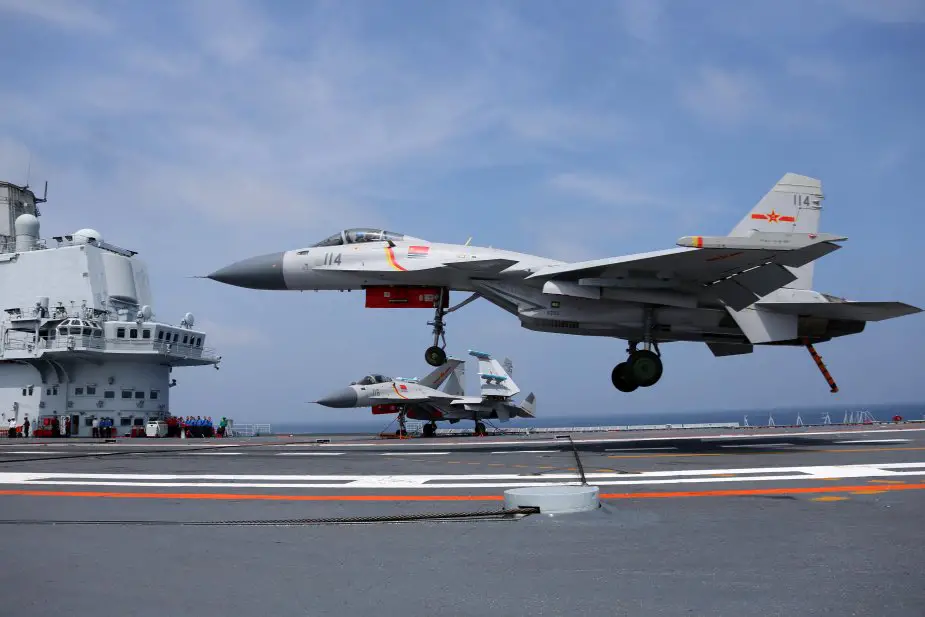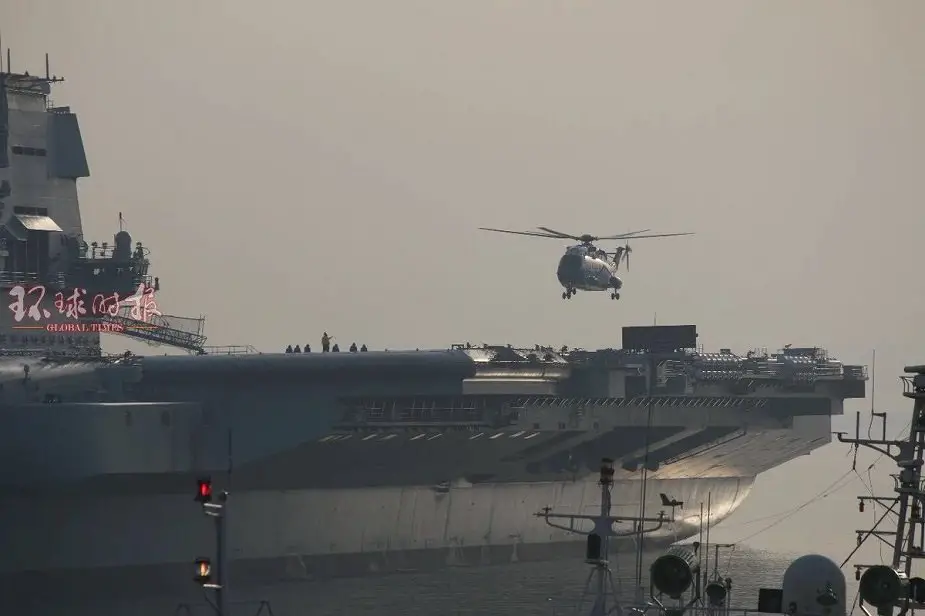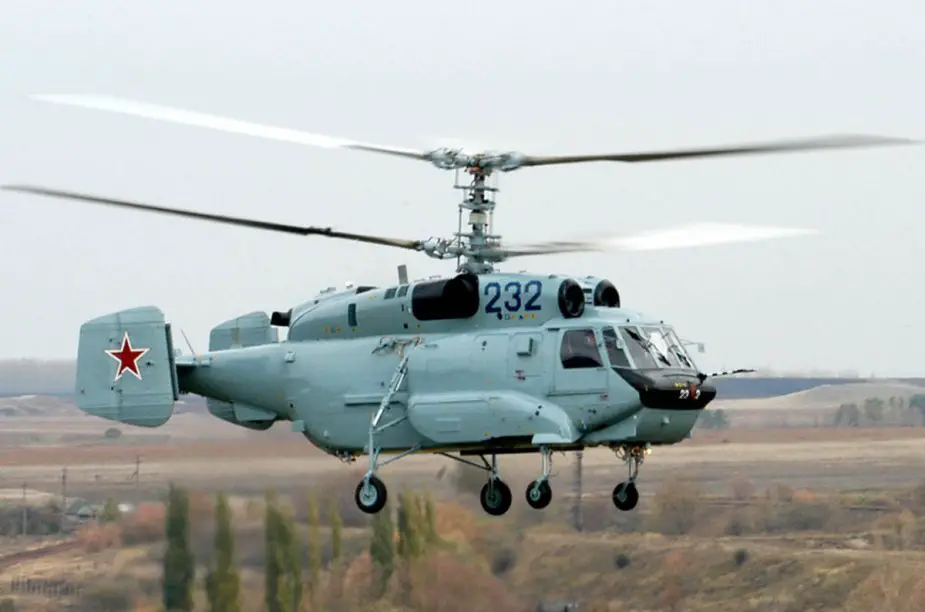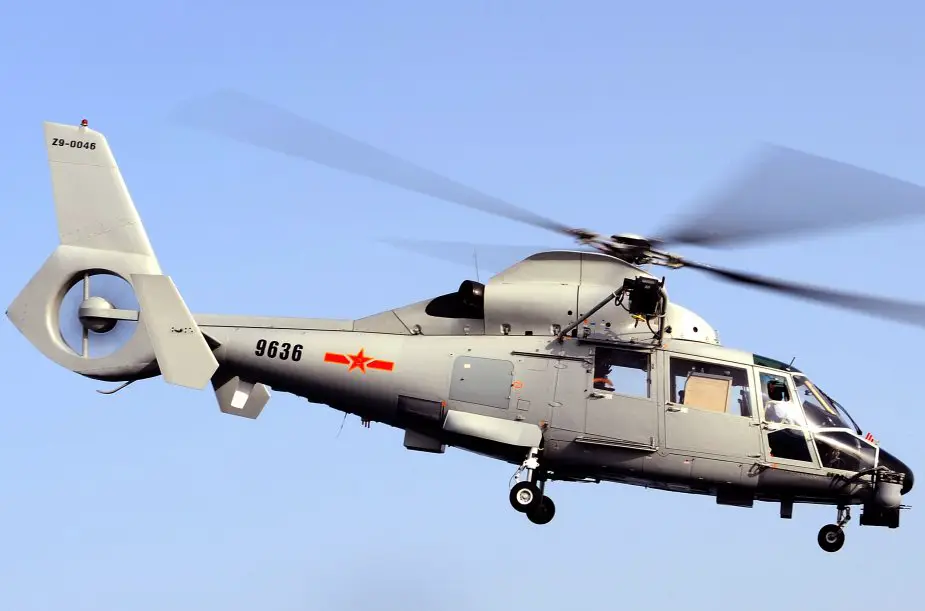Breaking news
New Chinese aircraft carrier Shandong to deploy wide range of aircraft.
China’s first home-grown aircraft carrier, the Shandong, officially entered into service last week, making China one of only a handful of countries to have more than one carrier. According to a publication issued by the Chinese Society of Naval Architects and Marine Engineers, the following aircraft are expected to be deployed on the warship.
 A carrier-borne J-15 fighter (Picture source: China.mil)
A carrier-borne J-15 fighter (Picture source: China.mil)
The Shenyang J-15, also known as the Flying Shark, is a fourth-generation, twin-jet, all-weather, carrier-based fighter jointly developed by the Chinese navy’s 601 institutes and Shenyang Aircraft Corporation.
It was developed from an earlier model, the J-11B, with elements taken from the Russian Sukhoi Su-33 air superiority fighter.
The J-15, with a maximum take-off weight of 33 tonnes, is the heaviest active carrier-based fighter jet in the world but the only one available to the PLA Navy.
Its weight is one of the key reasons military leaders have pushed for the use of an electromagnetic aircraft launch system – rather than steam-powered catapults – on China’s third carrier, which is currently under construction.
 A Z-18 VIP helicopter takes off from Type 001 aircraft carrier in Dalian (Picture source: Global Times)
A Z-18 VIP helicopter takes off from Type 001 aircraft carrier in Dalian (Picture source: Global Times)
The Z-18 is a new generation military transport helicopter. It was developed by Changhe Aircraft Industry Corporation and is reportedly based on the civilian Avicopter AC313. The latter was developed from an earlier model, the Harbin Z-8, which was itself a Chinese version of the French Aerospatiale Super Frelon.
The maritime variant is the Z-18F “Sea Eagle” and will be capable of carrying out anti-submarine warfare missions armed with Yu-7K lightweight torpedoes, as well as anti-surface warfare missions using YJ-9 anti-ship missiles. Several variants are also in the pipeline for early warning and reconnaissance missions.
 The Kamov Ka-31 (Picture source: rosoboronexport)
The Kamov Ka-31 (Picture source: rosoboronexport)
The Kamov Ka-31, also named Helix by Nato, is a helicopter originally developed for the Soviet Navy and is now used by the Russian, Chinese and Indian militaries.
One distinctive visual feature of the Ka-31 is the early-warning radar’s large rotating antenna, which can be folded and stowed under the fuselage. The second is the reduction of the bulky electro-optical sensor suite beneath the cockpit. The landing gear retracts to prevent interference with the radar.
 A Chinese naval Z-9 departs HMS Cornwall (Picture source: Wikipedia)
A Chinese naval Z-9 departs HMS Cornwall (Picture source: Wikipedia)
The Z-9, manufactured by Harbin Aircraft Manufacturing Corporation, is a Chinese military utility helicopter with civilian variants.
The first Z-9 flew in 1981 and was built in China from components supplied by French state-owned aerospace manufacturer Aérospatiale as part of a production patent bought the previous year.
After years of development, a naval version known as the Z-9C was introduced in 1990. As well as search and rescue and anti-submarine warfare duties, the Z-9C can be fitted with an X-band KLC-1 surface search radar to detect surface targets beyond the range of shipborne radar systems.



























